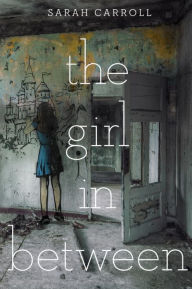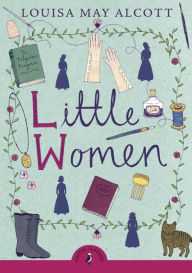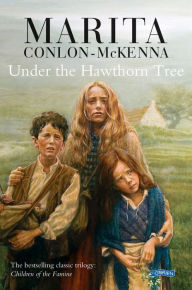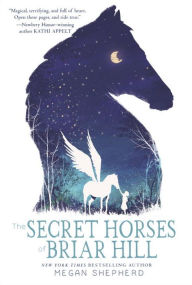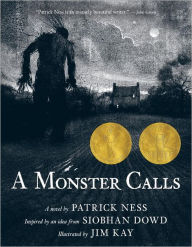We’re Just Another Layer of Lava: An Interview with Sarah Carroll, Author of The Girl in Between

The Girl in Between is a story about a homeless girl, living a life that is invisible to the rest of the world in an old mill she calls the Castle. When developers threaten to take over the mill, the girl turns to its ghosts and tries to understand how to break free of the past.
The B&N Kids’ blog sat down with Sarah Carroll, the author of this haunting debut. A writer and world traveller, Carroll talks about the importance of empathy, her own memories as a young reader (including some wonderful book recommendations!), and how her curiosity and observations of the world led her to the girl’s story.
The Girl in Between
The Girl in Between
Hardcover $16.99
In The Girl In Between, the main character lives in a creepy abandoned mill. Where did the idea for this setting come from?
The stained granite mill, surrounded by shiny new buildings, really exists. Or at least it did at the time of writing (it has since been torn down and a new development is under way). Before the construction boards went up, however, a homeless man had found shelter in its shadow. But he and the mill were invisible to those that rushed past on their way to the office.
In The Girl In Between, the main character lives in a creepy abandoned mill. Where did the idea for this setting come from?
The stained granite mill, surrounded by shiny new buildings, really exists. Or at least it did at the time of writing (it has since been torn down and a new development is under way). Before the construction boards went up, however, a homeless man had found shelter in its shadow. But he and the mill were invisible to those that rushed past on their way to the office.
One day as I passed, I thought, this place has a story. There’s a young girl trapped in there. And like the mill, she’s invisible.
From the beginning, I wanted to link the idea of invisibility with both homelessness and grief. To me, the mill represents a crumbling past left behind by an uncaring digital future. And, as the girl is stuck in the mill, she is stuck in the past. I knew, in order to leave the mill, she would have to leave the past behind her.
Your debut explores homelessness and family—what made you want to write about a girl seeking a place to call home?
For most of us, home is a given. So what is it like to be a young girl growing up without a physical place to provide the safety, comfort and belonging we all need? What would you do to replace or recreate it? And when you found something that you could call home, as the girl does with the Castle, what lengths would you go to to stop it from being torn away?
I wanted to explore what home means. But I also wanted to consider what family means when you have no home, especially when that family is just two people.
For both Ma and the girl, home is not a place, it’s when they are together. They love each other completely. And yet, it’s not enough. I was interested by the idea that how we love might not be the right way to love, and what that would mean for these two people who are so completely dependent on each other.
The novel deals with a lot of tough issues like abandonment, loneliness, and a Ma who is trying to do what’s best for her daughter but isn’t always emotionally or physically there for her. Why do you think it’s important for young readers to read a book like this?
It’s important to read because situations like this exist. That’s the main point of the novel; the girl is invisible, the world walks straight past her. Only Ma sees her and even she is not always there for her daughter. Society has let them both down, and they have fallen through the cracks, as so many people do.
I wanted to see how the girl copes when she has been abandoned by the world and, in part, by Ma. Because if I can see the world through the girl’s eyes, perhaps I’ll understand her struggle better. And that’s a responsibility we have as readers too, to understand the world better, to have empathy.
You enjoy travel and live on a houseboat—how have your experiences traveling to foreign places and living in an unusual setting influenced your writing?
Some stories that I write are based in places I’ve lived in, or travelled to. Of course, the more I see, the more settings and experiences I have to draw on in my stories; there wouldn’t be much point in my basing a story in Tanzania if I’d never been there, as I wouldn’t have felt its unique beat, and, therefore, my writing would lack richness and texture.
However, I think the main way travel influences my writing is that different environments force us to observe the world in a new way. Feeling the dry heat of Arizona makes me taste the bog-soaked wind when returning to Ireland. The memory of the easy, rounded laughter of Malawian women helps me notice the self conscious smiles of lycra-clad coffee drinkers in Dublin’s plush suburbs.
Travel makes me take note, and gives me the contrast I need to articulate the subtleties of character or environment that are unique to a time or place, a skill which is essential in good writing.
What has been your most inspiring travel experience?
While I lived in Tanzania, I visited an area where a Maasai tribe lives, called Lake Natron. I went back again and again to experience its timeless beauty, to sit and watch the sun rise over salt encrusted mud plains beneath a rift valley wall that stretched for hours into the shimmering mirage of afternoon…I could lose weeks there. I did, actually.
It’s a place before time, with Maasai men floating through the dust and Oldoinyo Lengai, an active volcano, belching ash into a huge sky. In the little village of mud huts and wooden shacks there is one shop, one bar. On blankets on the ground, women sell onions, beans and potatoes. There’s no phone signal for a hundred miles. There’s no running water, just a stream, and when the rains don’t come, the drought brings death to livestock. But when they do, the land is transformed into an oasis. Birds chirp, zebra and giraffe fill the horizon, and cattle drink their fill. And all the while, the volcano keeps belching like none of that matters. Because on the geological scale, it really doesn’t, we’re just another layer of lava.
What do you like about writing for a middle grade audience?
It allows me to see the world in a fresh way.
My narrators and voices are middle grade children that are old enough to question the way the world works but young enough to be relatively uncorrupted by it.
When we see a story through a child’s eyes, it’s with honesty that we hold a mirror to the world. We see situations for what they truly are, warts and all. And as the reader or writer, we learn as they learn.
Little Women
Little Women
In Stock Online
Paperback $12.64
What is your favorite memory as a young reader?
I was a nerd. My exam results mattered more than they probably should have. When I was studying for my first state exams, aged 15, I studied long and hard. When the day before the first exam arrived, my brain was pretty over-loaded. I had planned on studying all day, but my eye caught a book on my shelf. I decided I’d read for ten minutes. I lay down on my bed. Started reading. No one disturbed me because I was studying. When I looked up, five hours had passed. But, strangely, I didn’t care. Because I got what I needed. A true escape from the smothering air that clung to my desk.
What is your favorite memory as a young reader?
I was a nerd. My exam results mattered more than they probably should have. When I was studying for my first state exams, aged 15, I studied long and hard. When the day before the first exam arrived, my brain was pretty over-loaded. I had planned on studying all day, but my eye caught a book on my shelf. I decided I’d read for ten minutes. I lay down on my bed. Started reading. No one disturbed me because I was studying. When I looked up, five hours had passed. But, strangely, I didn’t care. Because I got what I needed. A true escape from the smothering air that clung to my desk.
I don’t remember what result I got in the exams. I remember the book though, it was Little Women.
Under the Hawthorn Tree: Children of the Famine
Under the Hawthorn Tree: Children of the Famine
By
Marita Conlon-McKenna
Illustrator
Donald Teskey
Artist
PJ Lynch
In Stock Online
eBook $6.99
What were your favorite books when you were a kid?
The younger version of me read books dripping in humour, but near-teenage-me gravitated towards books that broadened my understanding of the world.
What were your favorite books when you were a kid?
The younger version of me read books dripping in humour, but near-teenage-me gravitated towards books that broadened my understanding of the world.
Under the Hawthorn Tree allowed me to walk alongside Eily on her long journey to find food, shelter and a home for her younger siblings in famine-time Ireland. I devoured it with a hunger I would never know. The troubles in Northern Ireland were brought closer by fearless Sadie in The Twelfth of July, as she became aware of the lines that love is forbidden to cross. Further afield, Kiss the Dust revealed to me a world baked by sun and torn apart by civil war. And across the ocean and the years, Roll of Thunder, Hear My Cry’s Cassie Logan gave me a glimpse into the brutal racism that was to threaten her family, her security and her belief that all people are born equal.
The Secret Horses of Briar Hill
The Secret Horses of Briar Hill
Hardcover $16.99
What books would you recommend kids read if they like reading haunting stories like The Girl In Between?
Megan Shepherd’s beautiful novel, The Secret Horses Of Briar Hill and Patrick Ness’s award-winning A Monster Calls.
What books would you recommend kids read if they like reading haunting stories like The Girl In Between?
Megan Shepherd’s beautiful novel, The Secret Horses Of Briar Hill and Patrick Ness’s award-winning A Monster Calls.
A Monster Calls
A Monster Calls
By
Patrick Ness
Illustrator
Jim Kay
In Stock Online
Paperback $12.99
What’s next for you?
Book 2! It’s a follow-on from Book 1 in a way, as it is the story of the daughter of the developer who buys the mill in Book 1. The main themes are bullying and the power of words, and our public verses private faces.
What’s next for you?
Book 2! It’s a follow-on from Book 1 in a way, as it is the story of the daughter of the developer who buys the mill in Book 1. The main themes are bullying and the power of words, and our public verses private faces.
And after this interview, I am going to stop procrastinating and begin my first (of probably many) edits. I promise.
The Girl in Between is on B&N bookshelves now!
